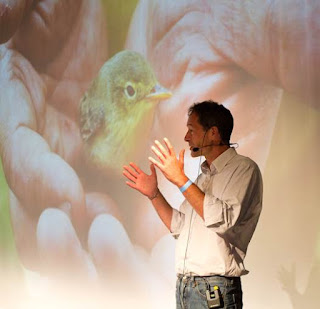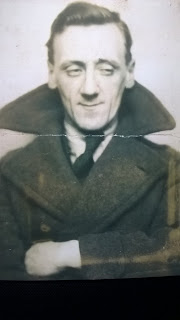The Lem Reviews 2020 - #2 "Asking to Zorro"
Rumours
about Daisy Flettine’s “Asking to Zorro” first began circulating in the late
1990s. A book unlike any other, they
said. The rumours continued through the
noughties: a book that required its own language, they said. And into the second decade of the new
millennium: a challenge, a revelation, a shift in the very axis of literature.
What on
earth were they on about?, I wondered.
I found out
when the review copy arrived – almost two years ago. “Embargoed until March 2020” explained the
covering letter in large red type.
Embargoed for two years?! What on
earth are they on about?
It soon
became clear. “Asking to Zorro” did
indeed require its own language – a language Flettine spent the bulk of those
decades developing. And it is a language
that any prospective reader has to master before they can access what is – in
the end – a truly remarkable piece of fiction.
At its
heart, AtoZ addresses the great dilemma of our age: how can we
communicate? Two protagonists, seemingly
stuck in a Beckettian wilderness, are in dialogue. One character is trying to explain something
to the other. Each effort at explanation
proves inadequate. Follow-up questions
seem only to deepen the dilemma: in order to explain this, I have then to explain that;
and in order to explain that, I have
to explain this.
We may or
may not be accustomed to such recursion; but we are certainly accustomed to the
manner in which to tackle the problem: we use words. Or, at least, that is our custom. But what if the words are not enough? Or even - and worse – what if the words are
actually in the way?
The
anthropologist Ray Birdwhistell (who invented the word ‘kinesics’) estimated that “no
more than 30 to 35% of the social meaning of a conversation or an interaction
is carried by the words”. The rest of
the meaning is conveyed by non-verbal behaviours such as gestures.
Various
attempts have been made to catalogue these non-verbal forms of communication.
The French ’pataphysician
Francois Caradec produced a ‘Dictionary of
Gestures’ in 2005, for example; while as long ago as the seventeenth
century John Bulwer
wrote books on ‘chirologia’ (“the natural language of the hand”) and
‘chironomia’ (‘the art of manual rhetoric’).
There is even an academic journal devoted to the study of gesture, run
by Adam Kendon, author of the seminal “Gesture – Visible Action as Utterance”.
Drawing on
such materials, Flettine devised not merely a dictionary but a lexicon, an
entire repertoire of markings and symbols to represent these non-verbal forms. For every gesture (and Caradec catalogued
850) she has specified something akin to an ideogram (think of Chinese symbols,
or Egyptian hieroglyphics). But she has
gone further. She has done the same
thing for facial expressions (including not merely the raising of an eyebrow or
the furrowing of a brow, but the degree
of raising or furrowing); and she developed a complementary schema for the very
many noises we as humans make that do not take the form of words. (Think of something as seemingly simple as
‘hmm’: how long a ‘hmm’? How
intense? With an emphasis at any point,
or any inflexion of tone? Flettine has
devised a visual script for indicating precisely what kind of ‘hmm’ is meant,
precisely what kind of ‘uh-huh’, and so on.)
The results
are, to say the least, intimidating. The
complementary annex to ‘Asking to Zorro’, which sets out the ideograms, signs
and etchings that correspond to gestures, facial expressions and non-word
sounds, runs to nearly 900 pages. The
actual book itself is a mere 110 pages.
The
resultant demand on the reader utterly dwarfs – for example – the challenge set
by Anthony Burgess in ‘A Clockwork Orange’
or by Russell Hoban in ‘Riddley Walker’. In those cases, much of the underlying
appearance and logic of the language we know remained intact. The task for the reader was ‘merely’ to learn
a handful of neologisms (in the case of Burgess) or to adapt to a dialect form
(Walker).
With
Flettine, this approach is impossible.
Whilst the two-volume solution permits the reader to have both texts
open simultaneously, the process of looking up each symbol or mark on a
one-by-one basis as one goes along is unbearably slow. The only alternative is to ‘learn’ the
lexicon, and then to read the text.
Hence the two-year embargo. It
took me the best part of eighteen months to familiarise myself with the
‘language’; and a further three months actually to read the book.
But what a
book it is. In a dialogue conducted
entirely by means of gesture, expression and wordless-noise, this is a story
about the near impossibility of true communication - in a language that is
almost impossibly inaccessible. It is a
story of our desperate need to communicate, in the language that, in the
physical world, is actually the dominant manner of our discourse. A story grounded in Beckett’s agonising wait – and
which forces us, too, to wait – and which, like Beckett, offers no easy
redemption; but which does, ultimately, offer us a glimpse of what deep connection
with ‘the other’ might offer.
In the end,
few will read it. But how many have
actually read Joyce’s Ulysses? Or Proust’s A
la recherche? Or Musil’s The Man Without
Qualities? These are texts which
transformed literature: I am convinced that AtoZ will do the same.



Comments